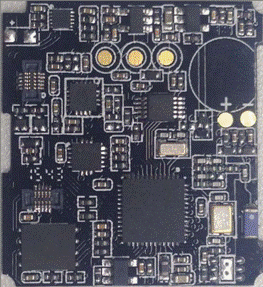First of all, how do PCB repairers improve themselves? Welding skills are very important. Flux, hot air, and suction guns must be used. These years, the resistance and capacitor components are all 0603/0402/0201 size. Get a broken motherboard, Remove the above components and then solder them back, you will know what skills you need to practice.
Next, go to the Tektronix website to grab their oscilloscope manual to read. Most of the masters use this stuff. Please register yourself for the website.
The first choice for the electric meter is fluke, which is simple and easy to use, just take a look and get familiar with it.
There are many levels of repairing circuit boards, and junior repairers basically only work as welders. The instruction you received is probably "Replace U37 BGA64 with a new one, R32 UNSTUFF, STUFF C330 0.1u". This means that the number U37 on the board (usually there will be a silkscreen icon showing the location of U37, just click the picture to find) a BGA (basically use machine welding, this knowledge is bigger, later), Desolder R32 (resistance) (UNSTUFF means that the components are not used), and solder a 0.1u capacitor to the position of C330.
As long as the repairer is familiar with the soldering iron and the tools, there is nothing to worry about. Soldering BGA is learning. BGA solder balls will only melt a little at a certain temperature, but they will not collapse. Unloading, removing tin, re-balling, solder paste on stencil, positioning, and reflow are all knowledge. Usually made for experienced veterans. The machine welding BGA must be at a constant temperature and timing, and be careful not to blow away the nearby components. It's very complicated, but generally PCB manufacturers of BGA components will provide rework document files, just read them obediently. Google "ti bga rework instruction" can find a bunch of files. (TI is a representative manufacturer)
The senior maintenance staff must judge by themselves where there is a problem and how to deal with it. It’s not a day or two to learn, and naturally it’s impossible to teach you here, but there are indeed some principles that everyone will abide by.

It is necessary to understand the circuit diagram to repair a board. Usually you will first look at the block diagram architecture diagram, first to understand which power, which reset#, which clock, which IO/bus. Which GPIO. Next, look at the circuit diagram, gerber file, and BOM list. At least know what the whole circuit board is doing. Google "intel motherboard block diagram" can find a bunch. here is one:
https://downloadmirror.intel.com/15197/eng/D915GAV_D915GAG_D915GEV_D915GUX_ProductGuide02_English.pdf
Next, do visual inspection/comparison. Compare with a good board. Find out which component on the rigid board has burnt marks, a corner that has exploded, broken, and tin bridges. The components are missing, the connector is not connected, the board is curved, the battery is leaking, the machine board is corroded... The advanced ones will use the X-ray of 5DX (a very expensive machine) to see the BGA solder balls, Look for cold welds or broken balls.
If you can’t figure out the reason, you have to turn it on and check it. First connect the power to see if there are any overheated components. Next, see if the level of each power is correct, and whether the RESET is given (usually a low trigger). Use an oscilloscope to see if the clock is there? See if there is anything coming out of the IO, and the GPIO level is correct.